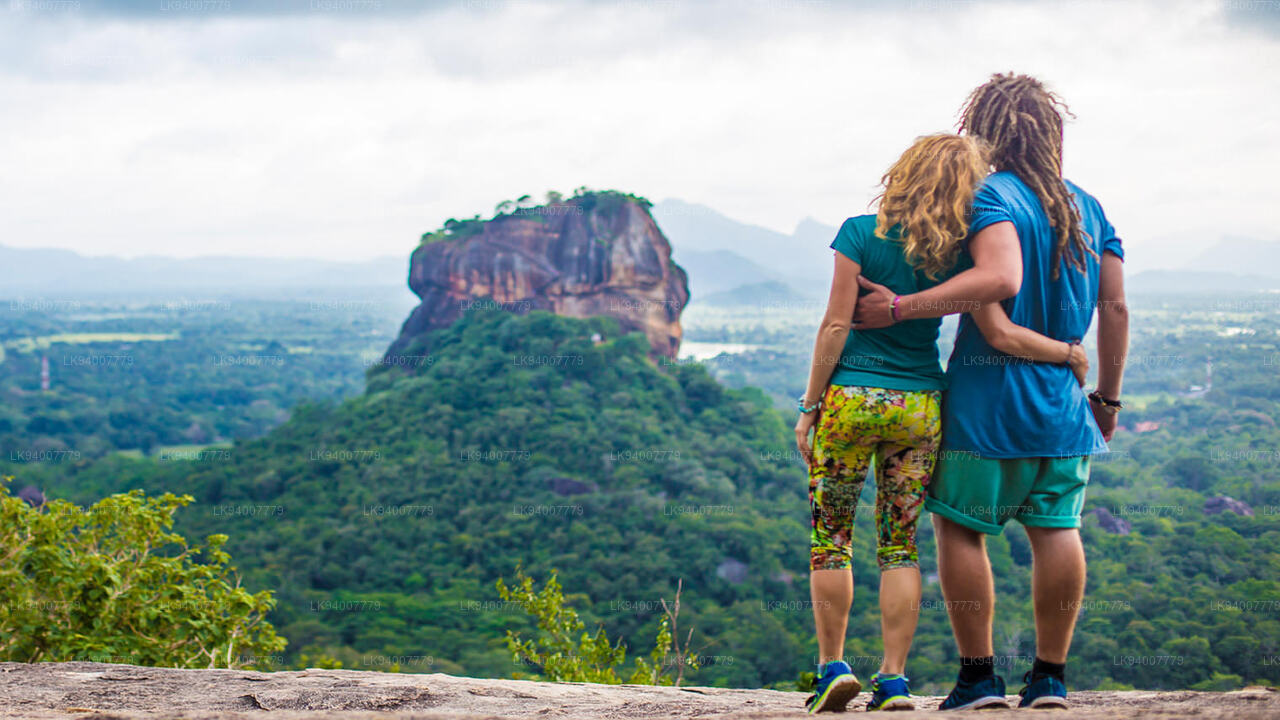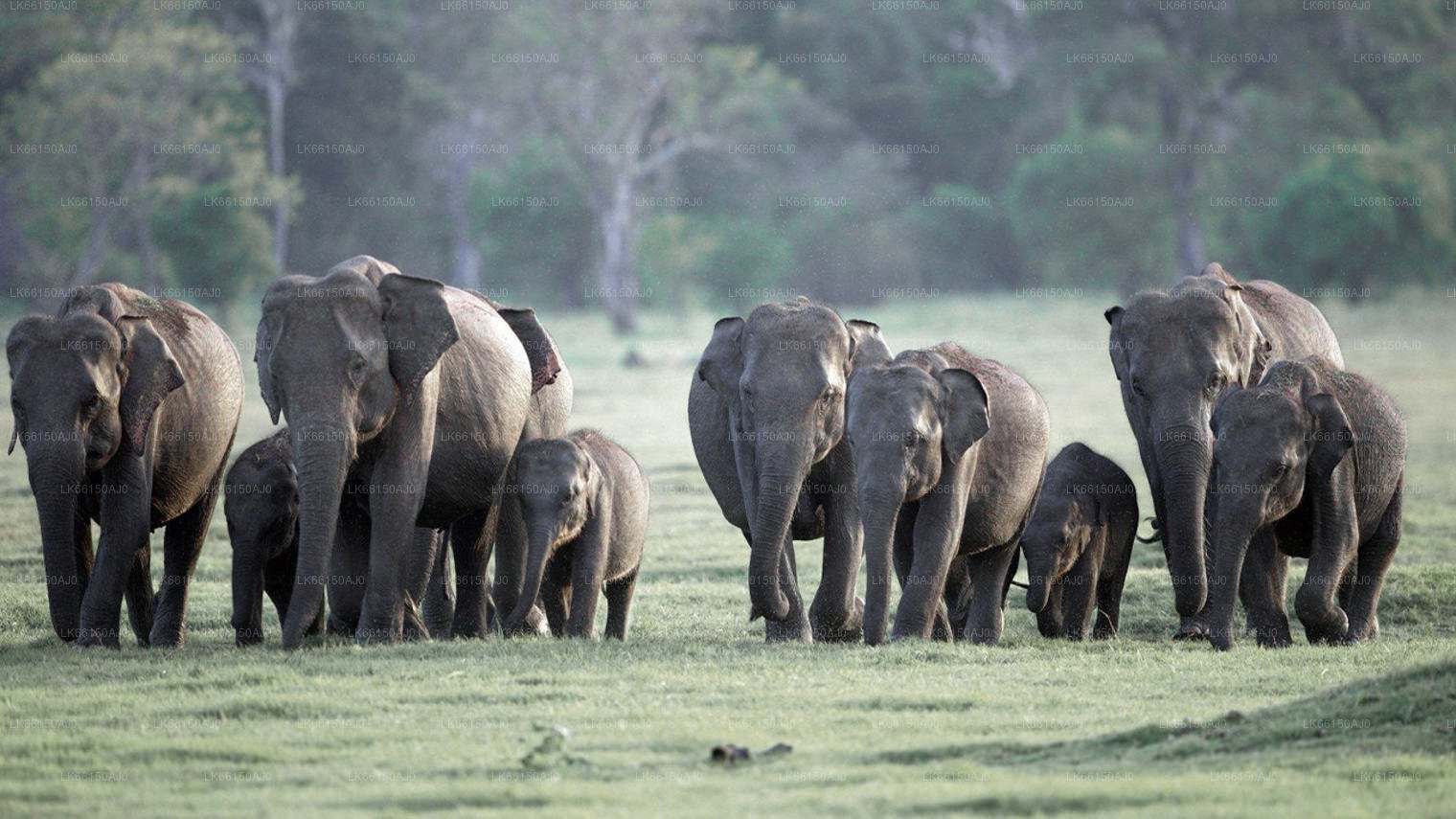
Miasto Minneriya
Minneriya, położona na Sri Lance, słynie z Parku Narodowego Minneriya, będącego ostoją bioróżnorodności i domem dla dużej populacji słoni azjatyckich. Centralną atrakcją parku jest malowniczy zbiornik Minneriya, który przyciąga miłośników dzikiej przyrody i stanowi zachwycającą scenerię dla safari.
Park Narodowy Minneriya
Minneriya National Park is located 182 km away from Colombo in the North Central Plains of Sri Lanka. The major city closest to Minneriya National Park is Polonnaruwa.
The renovated vast ancient Minneriya Rainwater Reservoir that irrigates the considerable area of the district of Polonnaruwa is the focal point of the Minneriya National Park.
Being part of the elephant corridor which joins up with Kaudulla and Wasgomuwa parks, Minneriya National Park gives the opportunity to see herds of Elephants throughout the year. May to October is the best period to visit Minneriya National Park in view of the famous Gathering of the wild elephants.
The Climate and Altitude
Minneriya National Park that covers an area of 8,889 hectares is of tropical monsoon climate: annual rainfall is about 1146mm and mean annual temperature is 27.5 centigrade. The altitude ranges from100m to 885m at the top of Nilgala peak.
Accommodation Options
Minneriya National Park has no accommodation facilities within its boundaries. But the cities close to Minneriya National Park-Sigiriya, Polonnaruwa, Habrana and Giritale- are clustered with luxury hotels and lodges.
Vegetation
The vegetation of the park consists of tropical dry mixed evergreen forests, abandoned chena lands, grasslands and wetlands. The open grasslands and old chena lands are dominated by the many species of small shrub.
The abandoned chenas are dominated by kukuruman (Randia dumetorum), keppettia (Croton sp.) wara (Calotropis Gigantea) and grasses i.e. katu-una (Bambusa bambos), wali indi (Phonenix zeylanica), illuk (Imerata Cylindirca) and pohon (Panicum Maximum).
The phytoplankton is dominated by Microcystis and Melosira.Among the large trees are palu (Manilkara Hexandra), Satin (Chloroxylon Swietenia), milla (Vitex Altissima), Kalumediriya (Diospyros Quaesita), halmilla (Berrya Cordifolia), weera (Drypets Sepiaria).
Mammals
Among the 24 species of mammals resident in the park are Elephants, Leopards, Sloth Bear, Spotted Deer, Sambar Deer, Wild Buffalo, Wild Pig, Grey Langers, Purple-faced Leaf Monkey, three species of Mongoose, Porcupine and Indian Pangolin. Pre-booked Minneriya Safari is the best way to see them all.
Amphibians & Reptiles
Among the nine species of Amphibians at Minneriya National Park are the endemic and endangered Slender Wood Frog and the Common Tree Frog. Of the 25 species of reptiles recorded in the park 8 are endemic including the Red-lipped Lizard. Water and Land Monitors are also seen here. The Mugger Crocodile can be seen near the tank. Many species of fresh water fish are found in the Minneriya reservoir.
Important Info: Elephant Migration between Minneriya, Kaudulla and Hurulu Eco Park
There are three national parks in the close proximity within that region. They are the Minneriya National Park, the Kaudulla National Park, and the Hurulu Eco Park,. All of the three parks are immensely popular among locals and foreigners the world over for their large herds of elephants. Generally, each year during the months of July to September large groups of elephants are found in the Minneriya National Park and then they migrate to Kaudulla National Park during the months October to November due to high rains and lakes getting filled up.
O dystrykcie Polonnaruwa
Polonnaruwa to drugie co do wielkości miasto w północno-środkowej prowincji Sri Lanki. Starożytne miasto Polonnaruwa zostało wpisane na Listę Światowego Dziedzictwa UNESCO. Polonnaruwa ma bogatą historię podbojów i walk, słusznie stanowiąc trzeci element Trójkąta Kulturowego. Położone około 140 km na północny wschód od Kandy, Polonnaruwa oferuje godziny niekończącej się przyjemności dla miłośników historii i kultury, oferując liczne zabytki o znaczeniu historycznym.
Wiele z zachowanych do dziś ruin przypisuje się królowi Parakrama Bahu I, który przeznaczył ogromne środki królewskie na planowanie miasta, w tym parki, budynki, systemy nawadniające i tak dalej. Okres jego panowania uważany jest za złoty wiek, w którym królestwo rozkwitało i prosperowało pod rządami wizjonerskiego władcy. Parakrama Samudra to ogromny zbiornik wodny, nazwany na cześć swojego patrona. Popularny Pałac Królewski, Sala Audiencyjna otoczona pięknie rzeźbionymi kamiennymi słoniami oraz Basen Kąpielowy odzwierciedlają najwyższy poziom inżynierii tamtych czasów.
O prowincji północno-centralnej
Prowincja Północno-Centralna, największa prowincja w kraju, zajmuje 16% całkowitej powierzchni kraju. Prowincja Północno-Centralna składa się z dwóch dystryktów: Polonnaruwa i Anuradhapure. Anuradhapura jest największym dystryktem na Sri Lance. Jego powierzchnia wynosi 7128 km².
Prowincja Północno-Centralna oferuje inwestorom liczne możliwości zakładania działalności gospodarczej, zwłaszcza w rolnictwie, przemyśle agrotechnicznym i hodowli zwierząt. Ponad 65% mieszkańców prowincji Północno-Centralnej utrzymuje się z rolnictwa i przemysłu rolno-spożywczego. Prowincja NCP jest również nazywana „Wew Bendi Rajje”, ponieważ w prowincji znajduje się ponad 3000 zbiorników średniej i dużej wielkości. Sri Maha Bodiya, Ruwanweli Seya, Thuparama Dageba, klasztor Abayagiri, Polonnaruwa Rankot Wehera i jezioro Lankathilake to miejsca o trudnej sytuacji w prowincji Północno-Centralnej.








